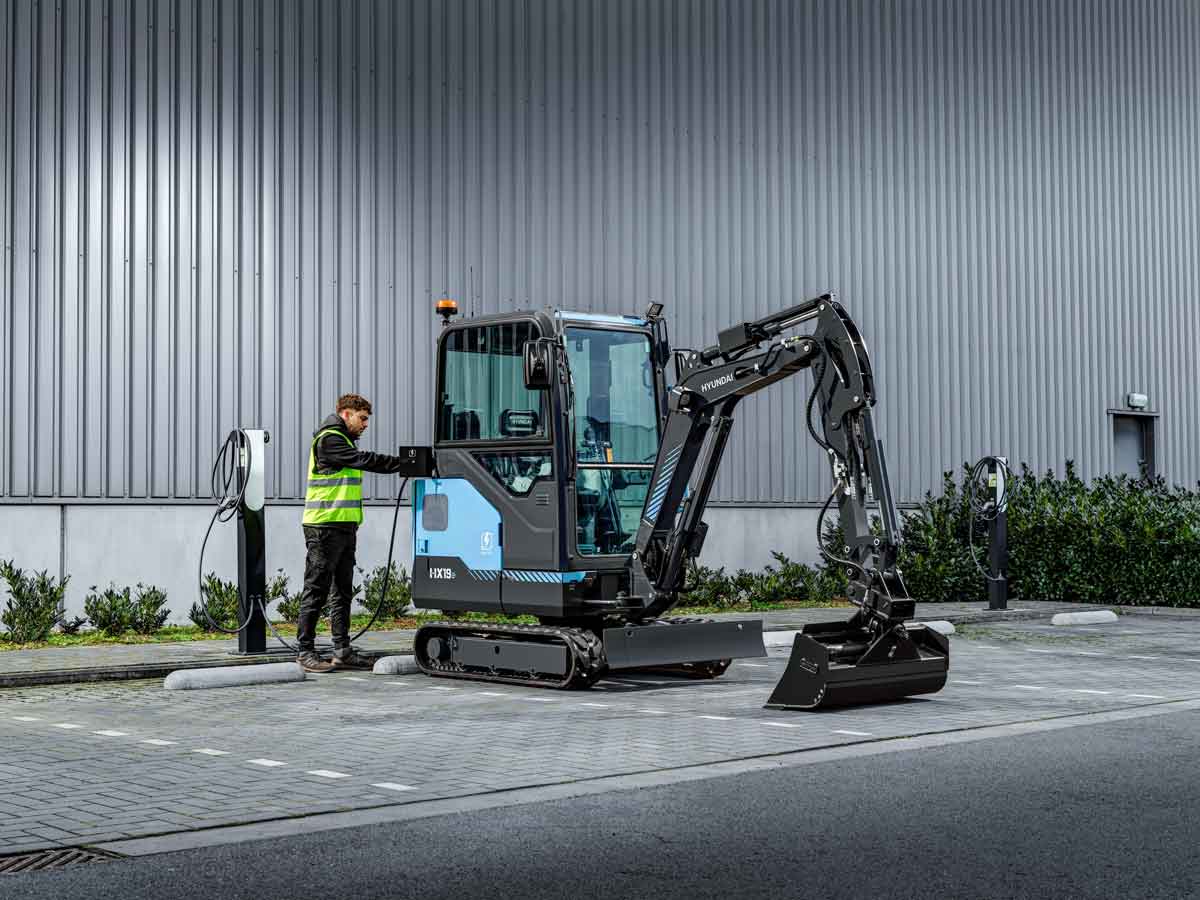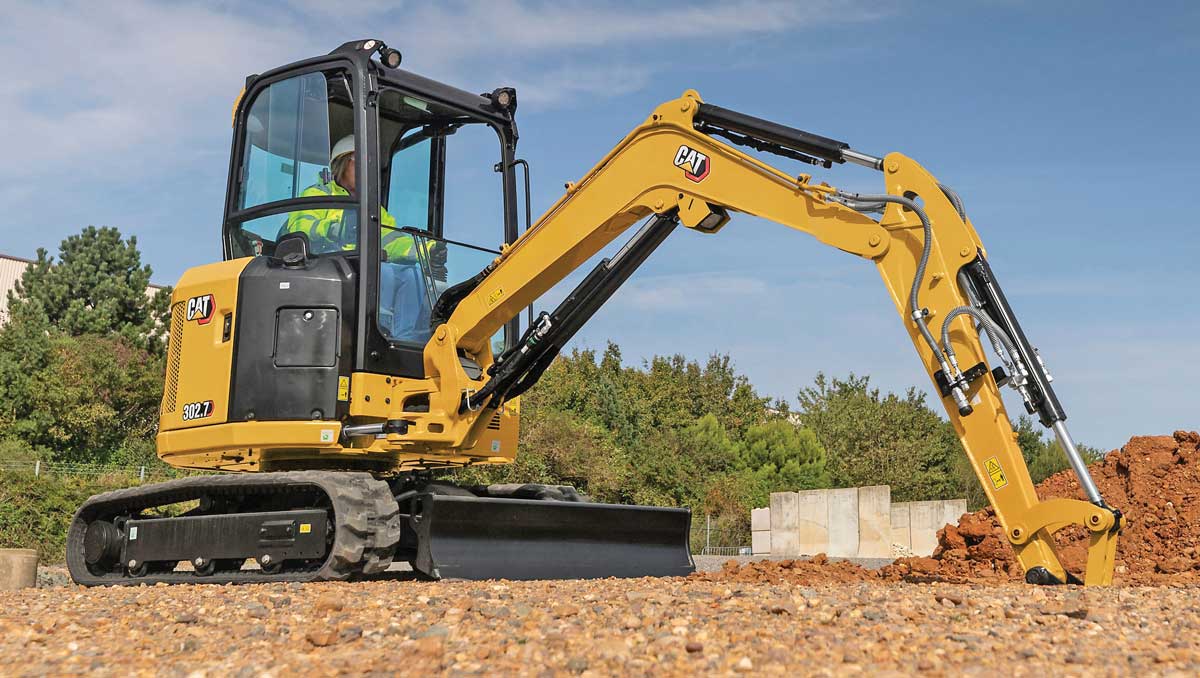Q&A: Discussing the Mini Excavator Market with Case’s Diego Butzke

Mini excavators are great for digging holes, utility trenches, pool work, graves, whatever. Just wave in a mini or compact excavator (same thing), and you can get that hole dug right quick. Mini excavators are also great tool carriers, wielding breakers, grapples, compaction plates, augers, mowers and more. These long-armed attachment-takers can easily fit into congested or open-space environments and spearhead a variety of operations from building retaining walls for landscaping to tearing down walls in indoor demo.
Our recent March/April issue of Compact Equipment has a big focus on mini excavators. And we mean big. The issue kicks off with a giant feature that includes everything you need to know when buying or renting a mini excavator in 2024. We interviewed a bunch of experts to craft that mega story, including Diego Butzke, product manager of excavators with Case Construction Equipment. Read on to see what the company’s product information specialist had to say about the mini ex market and Case’s extensive line of machines.
Compact Equipment: Diego, thanks so much for taking the time to talk to Compact Equipment. We’re big fans of the Case brand. Maybe we can start off our discussion on mini excavators by talking about how many units Case offers today?
Case now delivers one of the most comprehensive mini excavator lineups in the industry — delivering swift, smooth and smart solutions designed to work on any jobsite profile. There are currently two series in place — the C Series and D Series — which represent distinct features aiming to cover more customer requirements and are made up of nine models, including one electric unit — the CX15EV, CX17C, CX26C, CX30C, CX37C, CX42D, CX50D, CX57C and CX60C. The C and D Series offer…
- Diesel or electrified
- Zero tailswing or conventional
- Cab or canopy
- Two-way, four-way or six-way blades
- 1.5- up to 6-metric-ton models
If you had to pick one or two big differentiators in Case’s mini excavator product offerings, what would it be? A one-of-a-kind undercarriage? Unique standard features? The biggest selection? A hybrid excavator? Pick something and briefly explain it.

- Perfect attachment platform — Case mini excavators can be built with multiple hydraulic auxiliary circuits for multipurpose capability and compatibility with a variety of attachments. The CX42D and CX50D have exclusive auxiliary hydraulic circuits to run mulching heads or other one-way flow power hungry attachments for example.
- Superior performance — Case CX42D and CX50D provide superior performance with more lifting capacity, more breakout forces, fast cycle times at low operating costs.
Mini excavators are making big waves on jobsites all over North America. Click here for the latest news on these machines and the companies that make them.
What is your most popular compact excavator overall? Let’s say mini stops at 8 metric tons. What’s your most popular unit for rental applications? Tell us why these are so popular.
The most popular compact excavator model currently is our CX37C. The CX37C provides excellent value and performance in a compact footprint. With bucket forces of 6,900 lbs, a dig depth of 10 ft, 3 in. and an operating weight of 7,990 lbs, it delivers the greatest power and performance of any Case mini excavator that can be towed behind a 1/2-ton pickup truck — location dependent*. An adjustable boom and zero tailswing design allow for work in confined applications, and standard features such as auxiliary hydraulics and backfill blade or optional angled blade help owners get the most out of their investment.
*Always check vehicle capacities and state or local laws for applicable roading regulations and requirements.
In your opinion, what technologies are pushing the small excavator market to evolve? Electric, attachments, telematics, automation like grade control? Briefly explain if you can.

A couple of technologies we will see more on mini excavators:
- Tiltrotators — This is the next frontier for mini excavator attachments, helping reduce labor dependence, increasing productivity and applications where mini excavators can be used more productively.
- Machine guidance and control — Commonly used on large excavators, now making their way into midi and mini excavators. This helps cover skill gaps, reducing surveying manpower and increasing jobsite productivity
- Electric mini excavators are also certainly opening a new chapter for mini excavators, as a lower cost alternative to work indoors or noise-sensitive areas. Many people compare the acquisition cost between an electric mini excavator vs. a similar diesel engine powered machine, where they should be comparing to the total cost of running an indoor or noise-sensitive operation with vehicle exhaust extraction systems, noise isolation/sound barrier solutions and limited workhours and limited applications.
How many compact excavators do you think were sold in North America in 2023? How does that compare to 2022? What are your predictions for 2024?
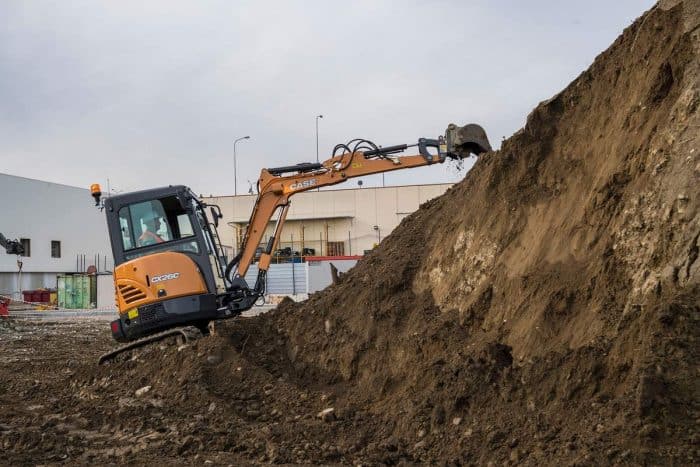
There were over 60,000 new mini excavators up to 6-metric tons sold in North America in 2023. Industry volumes sort of plateaued in the last couple of years, after a spike in 2021. That said, we are very optimistic about 2024. There’s good economic activity that will keep the mini excavator demand strong.
What growth markets do you see for compact excavators in North America? What declining markets do you see?
New projects, whether in residential construction, infrastructure or landscaping, will continue to drive a strong demand for mini excavators during 2024 and onwards. Most segments won’t see a decline in demand; however, they might not see the spike in industry volumes we saw in 2021. With the economy still pumping strong during 2024, with some uncertainties, such as an election year, we might see industry volumes in most segments plateau instead.
What is the most popular size class of compact excavators today? Why? What are the most popular options? Thumbs? Enclosed cabs? Lighting?
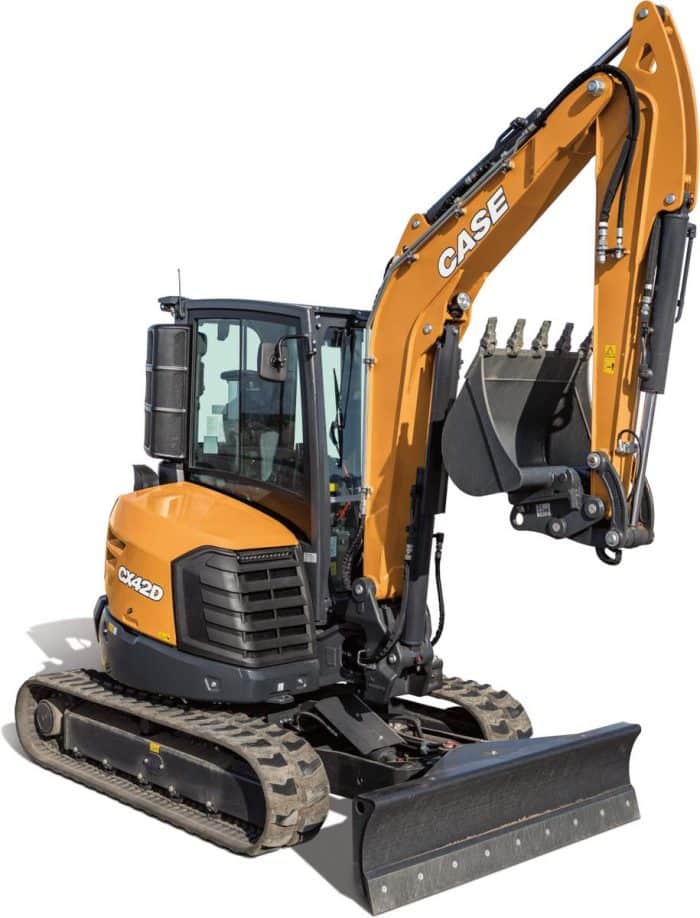
For many years, 3- to 4-metric-ton excavators have been the meat and potatoes in the industry. Those units are generally the right size for many applications, easy to tow around and great balance for the buck you spend. However, there’s been strong demand for excavators one-or-two-sizes-up, in the 4-5 and 5-6 metric ton classes. This is mainly due to larger projects that are unfolding over the last couple of years and requiring more performance from these machines, as well as less concerns to tow machines that require a CDL. There’s been a good influx of demand for smaller mini excavators as well, such as 1 to 3 metric tons as well; here the story is the need for small machines that can perform big in applications with space constraints, including applications that are benefiting the most from EV mini excavators.
What do you feel are the latest trends in hydraulics and attachments for mini excavators? New more powerful attachments? Automated operator settings? Grade control? Rotating buckets and grapples?
In the Case excavator lineup, we differentiate traditional attachments from advanced attachments. For example, in the advanced category we will see tiltrotators, which enable myriad work tools that can take productivity to new levels. It does require skills to effectively operate a tiltrotator, but there’s so much more that can be done, making a mini excavator less dependent on other machines or additional people, reducing costs and minimizing other risks. We also see a trend toward machine guidance and control, although in very specific applications.
What advice would you give to a contractor looking to rent or buy a compact excavator? How should a potential operator evaluate size, application, attachments, brand and price?
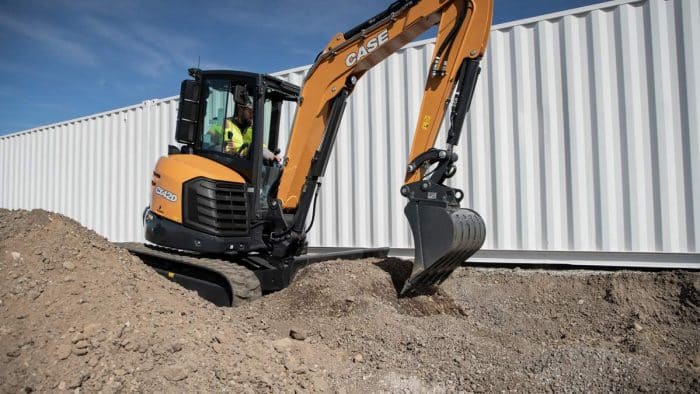
This is every construction equipment owner’s No. 1 question — whether to buy or rent. In my opinion, this is actually very simple to answer in four-steps:
- Does it make sense from a business perspective? As in, length of time the equipment will be used, terms of rental or acquisition, maintenance costs, carrying an asset in the books, tax write-offs (section 179), etc.
- Does it provide the flexibility the jobsite needs? Like having the features you need to get the job done productively, feasibly, safely and comfortably.
- Does it provide room for expansion? Such as allowing you to expand the work to other jobsite(s), use different attachments that can create new business opportunities, etc.
- Do you have your back covered? As in, who’s supporting you in case you have a machine down, what is the turnaround to put it back to work, do you have a relationship or a partnership with your equipment provider, etc.?
Keith Gribbins is publisher of Compact Equipment.
Four Considerations for Mini Ex Mulching Tool Selection

Demand for mulching and vegetation management attachments is growing, particularly for mini excavators. The height and extension versatility of a mini excavator’s arm, along with the smaller machine size, allows operators to mulch in difficult-to-reach places that wouldn’t otherwise be accessible. Clearing brush in tight spaces or on uneven ground and trimming overhead trees in gullies and ravines may not be possible with other equipment and attachment combinations.
When equipment owners are investing in a mulching attachment for their fleet, it is important to keep these top four considerations at the forefront of the decision-making process:
- Purchase from a reputable brand: The common saying “you get what you pay for” certainly applies to mulching head purchases. Selecting a lower-quality attachment risks damage to the excavator and potential expenses in downtime and repairs.
- Machine pairing: Complicated attachments, like mulching heads, must be paired correctly with the size and capacity of the mini excavator. Oversizing will cause advanced wear or failure from the extreme strain on the machine hydraulics, boom and components. Under-sizing puts too much workload on the mulching head, resulting in strain on the machine trying to complete work a larger mulcher would handle.
- Match teeth type with the job: Select mulcher teeth based on what type of brush and trees the mulching attachment will most commonly be clearing. Materials like carbide or samurai have different use cases to ensure ideal performance and proper wear.
- Top-line support: Mulchers are used in tough environments. Ensure you are purchasing from a dealer with a reliable support team to get you back on the job faster when wear parts need replaced or unexpected downtime occurs.
End sidebar provided by Case Construction Equipment Parts & Service.


